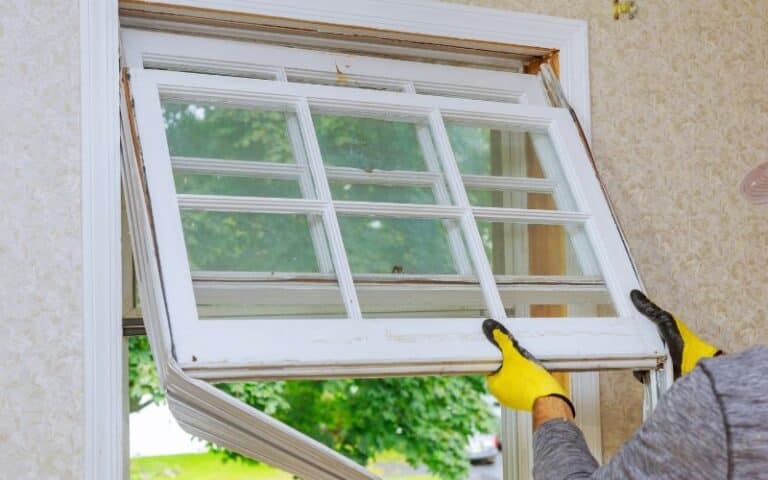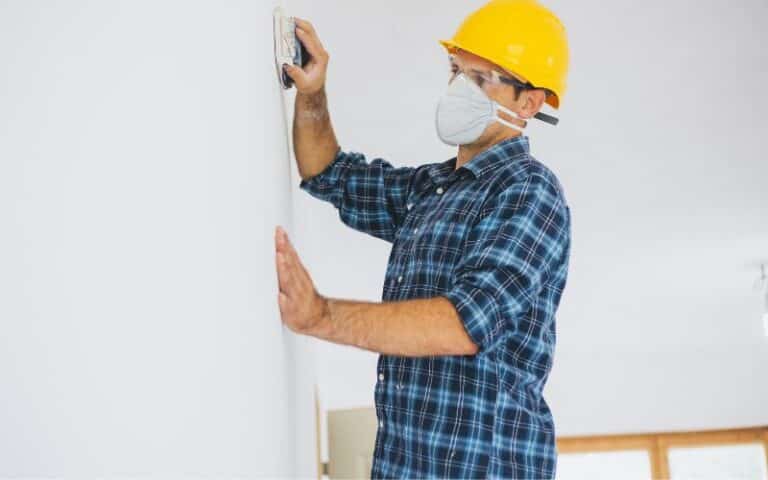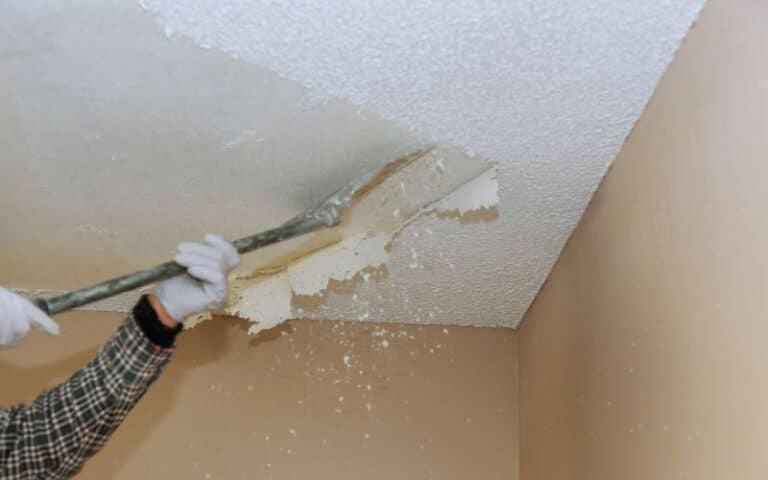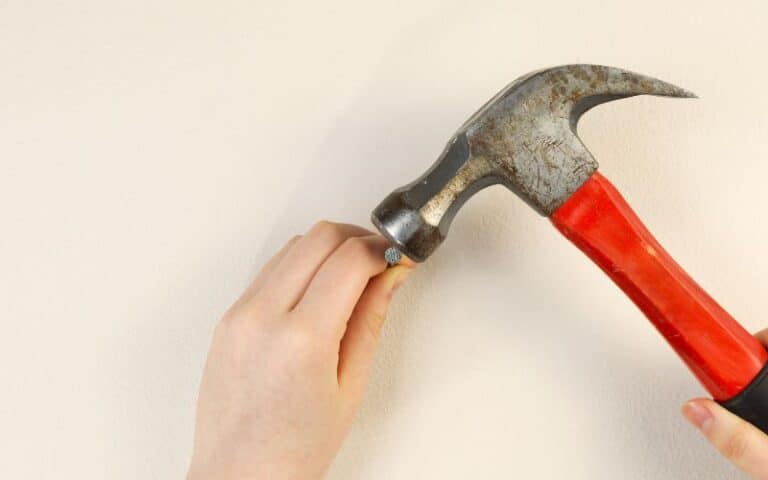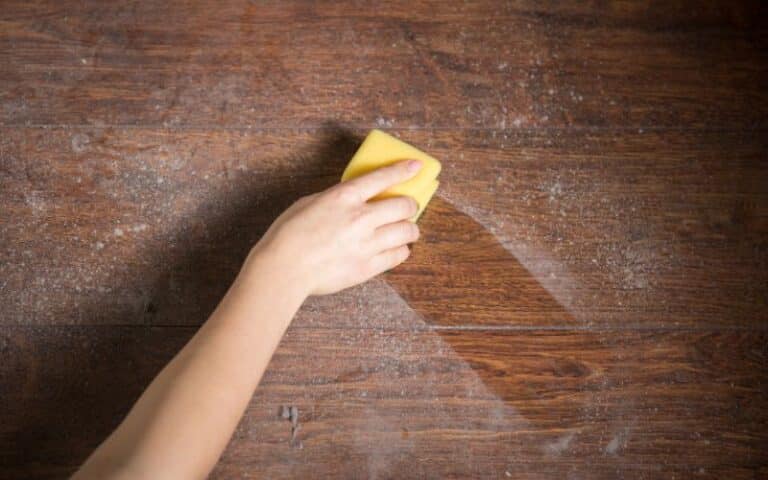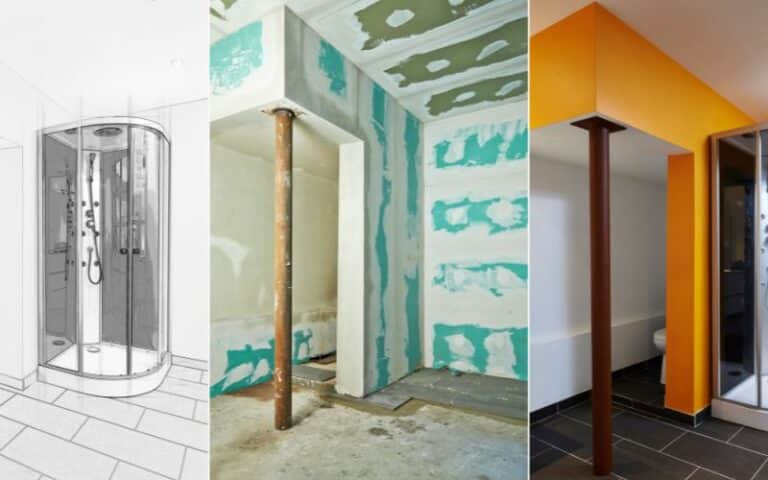When drilling through your drywall, you may notice that you cannot drill through a certain wall level.
That would make you wonder what is behind the drywall obstructing the drilling process.
The material behind your drywall is a metal sheet. The metal sheet serves as a layer to protect ductwork, electrical outlets, plumb work, etc., from damage when you’re drilling. Once you detect the metal sheet, stop drilling to prevent damaging valuable installations.
In this article, I’ll explain how to tell if a metal sheet is behind your drywall, even without a drill. You’ll also learn why a metal sheet is behind your drywall.
Ready for a Drywall Quiz?
Why is there Sheet Metal Behind my Drywall?
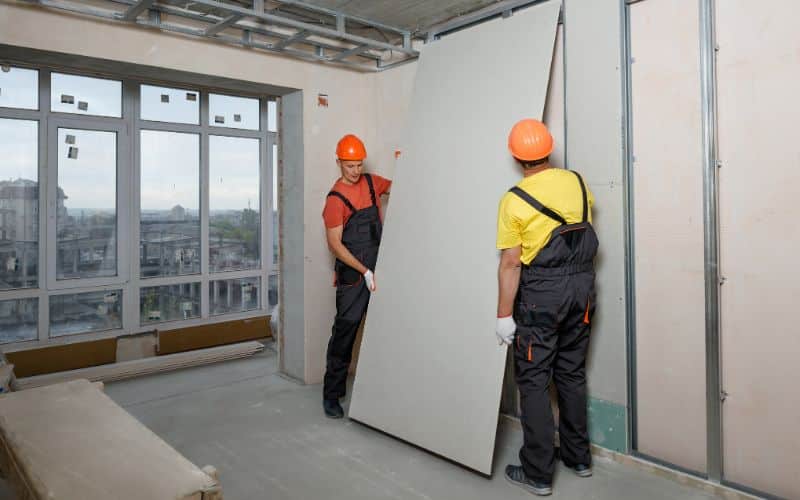
The metal sheet behind your drywall serves as a protective layer. The sheets help to cover up pipes, electrical work, and ductwork.
When drilling through your drywall, you may come across metal sheets. The metal sheets should tell you valuable things are around the area, and you should drill carefully.
If you need to know if there is sheet metal behind your drywall, one way to find out is to open up the drywall. When you open the drywall, you’ll see the sheet metal covering specific areas.
Another way to find out if there is a sheet metal behind your drywall is by using a magnet. The magnet will feel strongly attracted to the drywall if a metal sheet is behind it.
What Type Of Metal Are Used Behind Drywall?
The most common type of metal used for protective layering behind drywall is aluminum and steel.
#1. Aluminum
Here are some of the characteristics of aluminum that make it suitable for use as a protective layering:
- Aluminum is durable
- Aluminum is lightweight. It has a high strength-to-weight ratio.
- Aluminum does not rust over time
- Aluminum is cost efficient
- Aluminum facilitates ease of installation.
#2. Steel
Here are some of the characteristics of steel that make it suitable for use as a protective layering:
- Steel lasts for a very long time
- Steel is cost efficient
Can You Drill Through Metal Behind Drywall?
Yes, you can drill through the metal behind the drywall. If you have an electric drill with reliable power, you’ll succeed in getting through the metal.
However, it would be best if you didn’t drill through the metal behind your drywall. The metal sheet protects the wall’s plumbing, ductwork, and electrical outlets.
When you drill through the metal sheet, you’ll most likely damage those things and must find a way to repair them.
How Can You Tell if there is a Metal Sheet Behind Your Drywall?
You can tell if a metal sheet is behind your drywall when drilling. When drilling your drywall, you may need help getting into some areas quickly.
Those areas are where the metal sheet is present. Alternatively, you can figure out if there is a metal sheet behind your drywall by using a magnet.
The metal will quickly feel strongly attracted to your wall if a metal sheet is behind it. Ensure to take caution when drilling to avoid puncturing holes into the metal sheet.
When you drill into the metal sheets, you’ll most likely damage the items behind. If you dig through the metal sheets, you’ll need to repair it or install a new one.
You can also determine if a metal sheet is behind the drywall when you open it up. Creating a hole in your drywall will give you access to what is behind it.
However, you’ll need to take action to patch the hole after checking behind the drywall.
How to Patch a Hole in Drywall?
Here is a table showing the materials you’ll need to patch a hole in the drywall and their uses:
| Tools and Materials | Uses |
|---|---|
| Pencil and framing square | To mark out the drywall hole |
| Drywall saw | To cut through the drywall |
| Measuring tape | To measure out the size of the hole |
| Plywood strips | To serve as the spine of the hole |
| Drywall screws | To secure the plywood strips in the hole |
| Drywall patch | To cover up the hole in the drywall |
| Utility knife | To cut through the drywall tape |
| Joint compound | To secure the drywall tape |
| 120 grit sandpaper | To smoothen out the joint compound on the drywall |
| Primer | To cover up the pores in the drywall |
Here are steps on how to repair a hole in drywall:
- The first step to take is to prepare the hole.
- Use a framing square and a pencil to mark out the sides of the hole to create a square shape.
- Use a drywall saw to cut along the lines you made. Take caution while drilling to avoid puncturing a hole through the metal sheet behind the drywall.
- Measure out the hole size in inches and cut out two pieces of plywood strips just a few inches longer.
- Put one piece of the plywood strips into the hole and then secure it with drywall screws through the drywall and plywood.
- Attach the second plywood strip to the side opposite the first plywood strip. Secure the strip with drywall screws.
- Ensure to attach the screws such that they have a 6-inch distance from each other.
- Use the measurement of the hole to cut out a piece of drywall with the same thickness as the existing drywall.
- Attach the drywall to the hole and secure it with drywall screws. Ensure the seams are not more than 1/6 8 inches and the screws 1 inch from the edges.
- Use a utility knife to cut out strips of drywall tape for the seams. Gently lay the drywall tape on the seams and flatten them with a tool with a flat surface.
- After taping the seams, the next step is to prepare a joint compound. You can either use premixed mud or hot mud.
- If you decide to use hot mud, ensure to use a mixing drill to achieve adequate consistency.
- Use a 6-inch drywall knife to apply a layer of the joint compound on the drywall tape. Allow the coating to dry, then remove clumps with the drywall knife if there are any.
- Apply another layer of the joint compound on the drywall. Allow the second layer of the mixture to lay along the edges of the hole.
- Once the second layer dries, apply a third layer.
- After the third layer of the joint compound is dried, the next step is to smoothen it out with sandpaper.
- Use 120-grit sandpaper for the sanding process.
- After sanding the joint compound, the next thing to do is to apply a primer to that area. Use a paintbrush to spread the primer (preferably waterproof) on the patched site.
- After priming the area, you can decide to paint it or even paint the entire drywall if you want to.
How to Install Metal Sheets Behind Your Drywall?
Here is a table showing the materials you’ll need to install metal sheets behind your drywall and their uses:
| Tools and Materials | Uses |
|---|---|
| Measuring tape | To get the measurement of the wall |
| Tin snips | To cut through the framing track |
| Screw, Screw gun, and drill | To secure the studs into the metal sheets |
| Hammer | To plumb the studs in the track |
Here are steps on how to properly install metal sheets behind your drywall:
- The first step is to figure out the length of the wall with a measuring tape.
- Cut the framing track with thin snips according to the length you measured.
- Use ⅝ inch self-taping screws to attach the framing track to the ceiling joists. This track will serve as the top plate of the wall.
- Use a screw gun/ drill and a screw tip so you’ll be able to bore a hole through the metal.
- Screw the tracks for the bottom plate with ⅝ inch self-taping screws and a screw gun.
- Mark the position of the studs with a 16-inch space standard and cut them to length.
- Use a hammer for plumbing the studs into the bottom track. Secure the studs to the way with 1-inch metal screws.
- At the middle of the track, use something to mark openings for the door and window and bend the track 90 degrees.
- Fit the bent section of the track to the vertical studs and then screw them in with metal screws.

